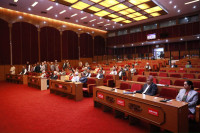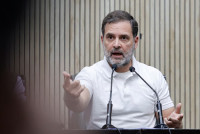Columns
Sequencing the post-Covid-19 recovery
Keynes’s emphasis on the order of post-crisis economic policies is still highly relevant.
Robert Skidelsky
John Maynard Keynes was a staunch champion of US President Franklin D Roosevelt’s New Deal. The road to a civilised future, he wrote, went through Washington, not Moscow—a direct rejoinder to those idealists, including some of his students, who put their faith in communism.
But Keynes was not uncritical of FDR. Specifically, he faulted Roosevelt for mixing up recovery and reform. Recovery from the slump was the first priority; social reforms, 'even wise and necessary,' might impede recovery by destroying business confidence. Presaging today’s debates about post-pandemic economic-policy priorities, Keynes argued that proper sequencing would be the key to the New Deal’s success.
The advisers in FDR’s 'brain trust' were reformers, not Keynesians, and had a different view. Attributing the Great Depression to excessive corporate power, they thought that the route to recovery lay in institutional change. As a result, the so-called Keynesian stimulus was a minor component of the New Deal—emergency treatment pending longer-run cures.
Keynes himself repeatedly argued that the New Deal’s extra federal spending was insufficient to bring about a full recovery. FDR’s total stimulus package of $42 billion—mostly spent in the first three years of his presidency, from 1933-35—amounted to about 5-6 percent of US GDP at the time. Keynes, taking a rosy view of the fiscal multiplier, thought it should be double that.
The Nobel laureate economist Paul Krugman said much the same about President Barack Obama’s 2009 stimulus of $787 billion, which came to 5.5 percent of GDP. On the basis of such uncertain reckonings, President Joe Biden’s $1.9 trillion economic rescue plan, equivalent to 9 percent of current GDP, seems about right.
Keynes was talking about fiscal stimulus. He was famously sceptical of the monetary stimulus attempted by both President Herbert Hoover in 1932 and FDR in 1933—now called 'unconventional monetary measures,' or, more simply, quantitative easing (QE). Then, like now, the goal was to bring about a recovery of prices by printing money.
The most controversial of these schemes, Roosevelt’s gold-buying spree, was designed to offset the collapse in commodity prices. As FDR explained in one of his famous fireside chats, higher hog prices meant higher farm wages and buying power. In fact, large-scale gold buying by the US Treasury and the Reconstruction Finance Administration failed to move the price of hogs or anything else.
Keynes’s reaction was scathing. Rising prices are an effect of recovery, not a cause of it, he argued, adding that trying to raise output by increasing the quantity of money was like 'trying to get fat by buying a larger belt.' All that FDR’s gold-buying program did was to replace gold hoarding with currency hoarding. And yet economists continually reinvent the wrong wheel. The 2009-16 QE programmes embodied the same misguided theory and similarly failed to boost the price level.
Likewise, Keynes criticised those provisions of FDR’s National Recovery Administration that tried to engineer recovery by strengthening the position of labour. This, too, he thought, was the wrong way round: the time to saddle business with extra costs was after recovery was secure, not before. And while Keynes never challenged FDR’s promise to drive the money changers out of the temple, he must have wondered about how this would affect the confidence of a paralysed financial system.
Finally, Keynes worried that mixing up recovery and reform was giving FDR’s administration 'too much to think about all at once.' This observation should serve as a warning to those who see in an economic crisis the chance to push all their favourite schemes, regardless of temporal consistency.
Keynes’s stress on the importance of proper policy sequencing is highly relevant today. But, as we emerge from the Covid-19 pandemic, the distinction between recovery and reform—and consequently between macro and micro policy and the short and long run—is less clear cut than it seemed to Keynes (and others) in the 1930s.
For starters, full-employment policy is now obviously linked to employability, which was simply not the case in the 1930s. The reason so many people were out of work back then was not that they lacked the skills required by industry, but rather that aggregate demand was insufficient.
Keynes thus wrote in December 1934 that the purpose of the government spending a 'small sum of money' was to get 'private individuals and corporations to spend a much larger sum.' What they spent it on was of no further concern to policymakers.
But in today’s age of automation, no government can afford to take such a cavalier attitude to the sustainability of employment. As early as 1930, in fact, Keynes foresaw technological unemployment as a problem that would be outside the scope of demand management.
Since then, the accelerating threat of job redundancy has enlarged what Keynes called the 'agenda' of government. In particular, the state must be centrally concerned with the speed of technological innovation, the choice of technologies, and the distribution of the productivity gains that technology enables.
In the coming years, the uncomplicated Keynesian full-employment policy will need to give way not just to a training guarantee, but also to an income guarantee as the character of work changes and the quantity of necessary human labour falls. Sustainable employment may thus be very different from what we now think of as full employment.
Then there is environmental sustainability. Although Keynes understood that the state would need to account for a much larger share of investment, this was mainly a matter of smoothing out fluctuations in the business cycle, not plotting a sustainable ecological future. (Conferences on nutrition always bored him.) He was too much of a liberal, or perhaps simply too much of his time, to believe that the state’s agenda should include deliberately shaping the future through its choice of investment and consumption projects.
Today, economic reform shadows recovery to a far greater extent than it did when Keynes distinguished between the two. But his way of setting out the relationship is a clear starting point from which to build both better.




 8.12°C Kathmandu
8.12°C Kathmandu















